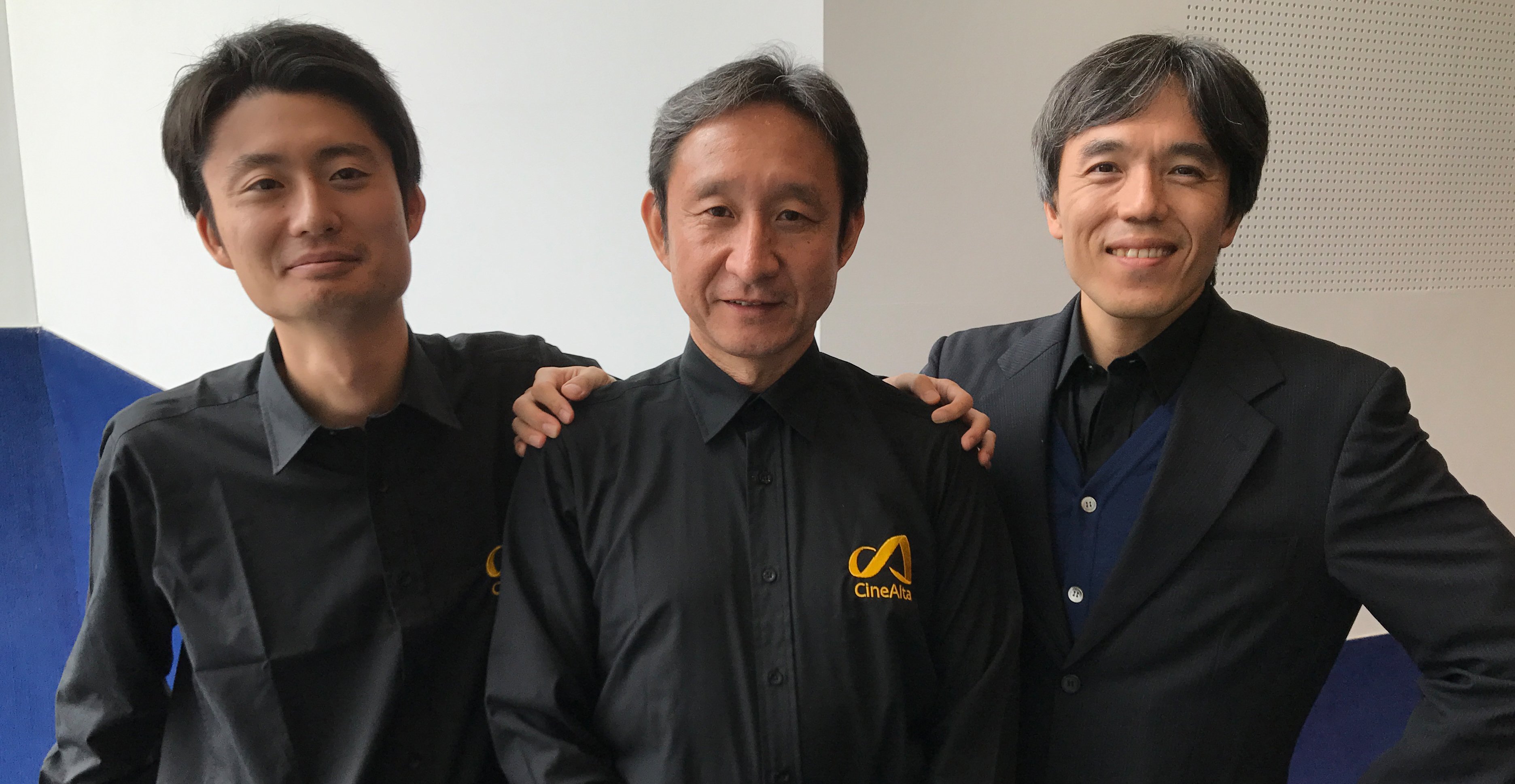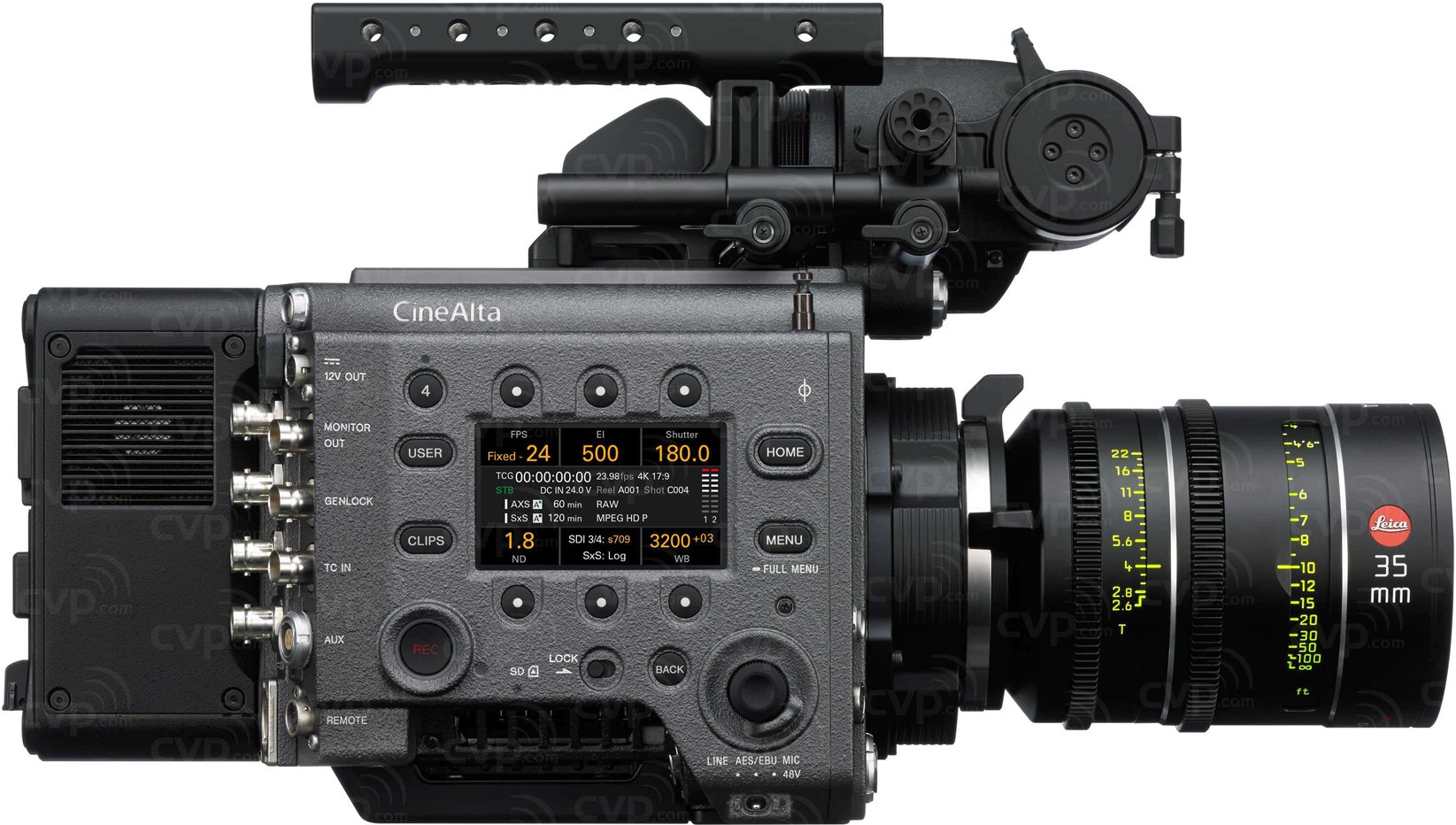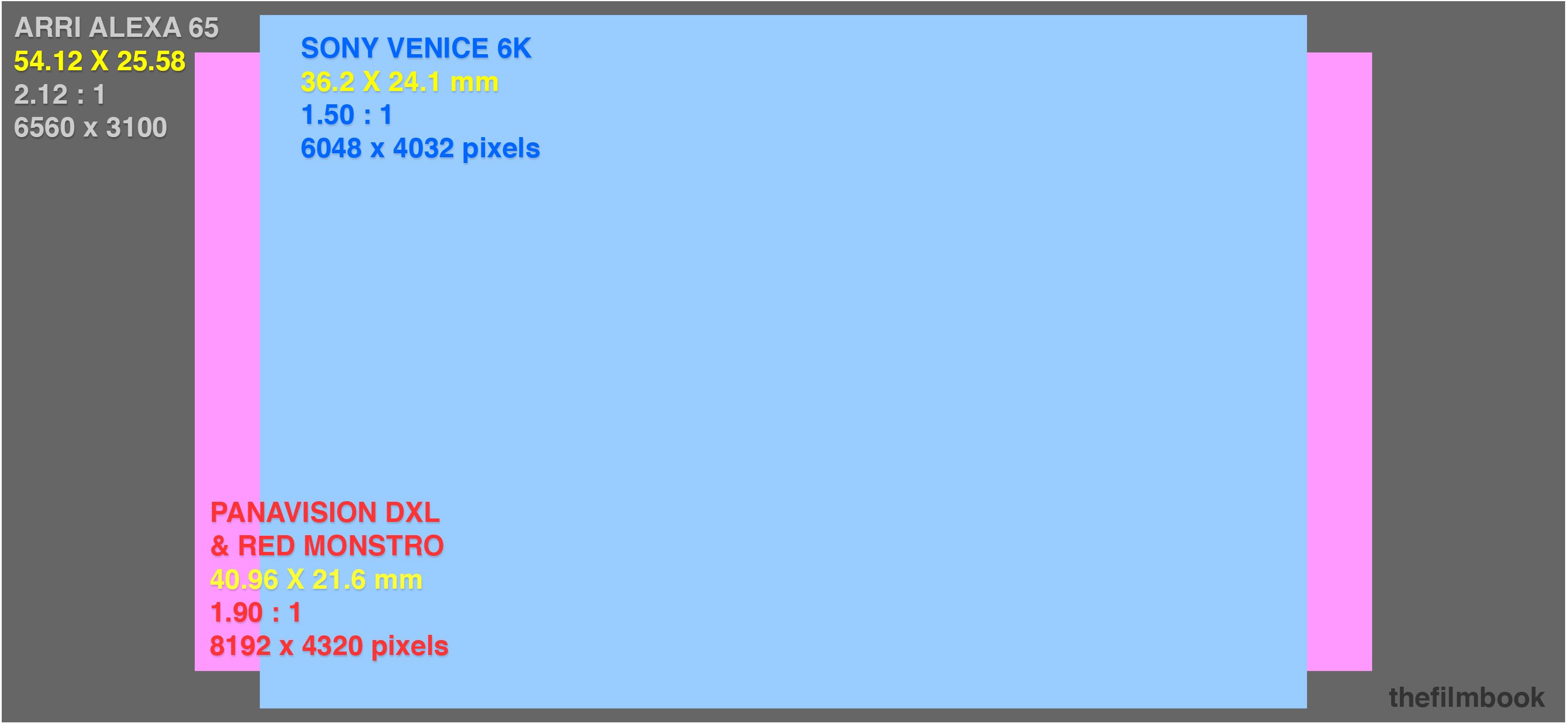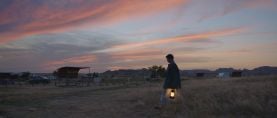VENICE Camera - 1. Speaking with Sony Experts
This is PART 1 of my posts about Sony's new Venice camera, the highlight of the IBC show last September.
The introduction of Sony's VENICE camera was the signature event at the IBC trade show last month. This post is based on group conversations with experts from Sony at IBC about their brand new camera. My next post continues with photos of the Venice, and links to Venice videos and resources.


I spoke with two members of the Japanese Camera System Planning and Marketing Division: Marketing Manager Takahiro Kagawa, and Product Planner Yutaka Okahashi; as well as two engineers: Product Leader Katsuya Kondo and Mechanical Engineer Yuya Ono; two people from Sony Europe: Sebastian Leske, Product Marketing Manager for Cinematography in Europe, and Richard Lewis, Chief Engineer at Sony Digital Motion Picture Center Europe at Pinewood Studios. Peter Sykes, Sony Europe’s Strategic Technology Development Manager, gave me a brief overview.

Since they spoke as a team, I have combined their answers to my questions. I have also added explanatory notes and illustrations.
+++
Introduction - the Venice Canvas
The Venice sensor is almost exactly 36 by 24 mm, the size of the classical 35mm still photograph negative and twice the size of 35mm 4-Perf film. This is also similar to the size of Vistavision, a format used by Alfred Hitchcock for some of his films. 36 x 24 mm is also known as Full Frame. Full Frame cinematography offers a more natural perspective than Super35, but with less depth of field.
Most professional digital motion picture cameras, like the Sony F55, have adopted a sensor close to 3-Perf Super35, a format that facilitates using existing spherical lenses for 1.78:1 television series and 1.85:1 features.
However the Super35 area (in blue below) is not tall enough for the 19mm height (in green below) imaged by traditional anamorphic lenses designed for 4-Perf negative.

The Venice is the first Sony camera with a sensor area tall enough for traditional 4-Perf anamorphic.
The Venice camera will be introduced in stages, first with a 4K width of 4096 pixels (in dark blue below), then with a 6K width of 6048 pixels (the bigger rectangle below).

The early versions offer modes that crop the Full Frame sensor image down to 4K width for: 16:9, 17:9, 4:3 anamorphic, 6:5 anamorphic.
In the diagram above, the squeezed 4K image in the dark blue anamorphic 4 by 3 area will become a 2.66:1 unsqueezed image, or 2.7:1 for short. Another possibility is to use the 6 by 5 mode to obtain a 2.4:1 image.
The later version of the Venice will offer the larger Full Frame 6K width cropped to various formats: 16:9, 17:9, 1.85, 2.39 and 3:2.
(The 16:9 formats have slightly reduced widths).
The Venice E lens mount is designed to easily accept most other lens mounts such as PL and PV. This means that the Venice can be used with most existing motion picture lenses, and also the growing number of Full Frame motion picture lenses from Angénieux, Cooke, Leica, Panavision, Zeiss and others, as well as the vast repository of legacy still camera lenses, which are sometimes modified for film use.
The importance of the Venice is that it offers a blank canvas for almost every format and lens, with the exception of 65mm. Filmmakers can use the Venice to shoot spherical Super35, anamorphic, Full Frame with most available lenses.
+++
Design
Benjamin B: What was the design process that led to the Venice?
Sony team members: We gathered a lot of feedback from owners and users of the F65 and F55. We also spoke to directors of photography, camera assistants, DITs, colorists and others to find out what they wanted in a camera.
One big request was a larger sensor size. There is a lot of movement in the market towards Full Frame.
Another request was to achieve a correct area for anamorphic with a 6 by 5 format. The F55 has a 17 by 9 sensor that doesn’t fit anamorphic. We wanted to offer the best quality anamorphic.
So we ended up with a Full Frame sensor that would cover every format that people were asking for.
Why did you decide to make a Full Frame sensor rather than 65mm?
Sony team: 65mm is a niche market, with a very limited selection of lenses world-wide. Full Frame is lens agnostic and gives creators and cinematographers many more choices.
+++

+++
6K
How did you decide upon 6K resolution for the Full Frame?
Sony team: The scanning area for shooting Super35 on the Venice is the same as the F55 sensor. 4K is the industry standard for Super35 size, and 6K is a natural extension when you scale to Full Frame.
We found that 6K offers a "sweet spot" for image quality, with very good dynamic range and signal to noise ratio. It’s important to stress that resolution is only one of the factors that makes a great image.
NHK is developing an 8K camera for Japanese television, why didn’t you go 8K?
Sony team: We always listen to the market. If people ask us for 8K, we will do it, but, for now, we have started developing the 8K technology with our key broadcast station to look for the future beyond 4K.
+++
New Sensor
How did you develop the sensor?
Sony team: The sensor was developed from scratch; the decision was made to start again with a completely new sensor from our semi-conductor colleagues. The Venice sensor readout is very fast, it will be very difficult to see “jello” effects, like you do on other cameras. And it has very little noise.
I’ve heard that large sensors are difficult to mass produce.
Sony team: Yes they are, but it’s different for us, we may have a smaller failure ratio than others. Sony manufactures millions of sensors, so failure ratios really matter.
You have released a video showing how to swap the camera's sensor.
Sony team: We don’t recommend that any user change the sensor, but it’s possible for a trained technician to do so, because the Venice is designed to be modular. This means we can easily update the sensor in the future.
FD Times states that the photosites on the sensor are 6 microns?
Sony team: Roughly. Let’s say that they are similar to those of the F55. Again, the area for shooting Super35 on the Venice is the same as the F55 sensor.
The F65 had an innovative diagonal Bayer pattern, is that the case with the Venice?
Sony team: No, the Venice has a standard Bayer pattern.
+++
Color
Cinematographers have told me that they value the color rendition of the F65. Are the color filters on the Venice sensor's photosites the same as the F65?
Sony team: Yes, the Venice color filters are the same as the F65, aside from the Bayer pattern. We wanted to avoid changing the workflow, so we are also using the same S-Log3 Gamma.
Claudio Miranda, ASC, said that the Venice has "a very cinematic look". Other cinematographers appreciate its film look, notably in the skin tones.
A lot of people want a more filmic image on the SDI output. So Venice has an option to use pre-installed film-look LUTs to reproduce a natural filmic curve.
+++
Dynamic Range
What is the latitude -- or dynamic range -- of the Venice?
Sony team: Our spec for the F65 is 6 stops above and 8 stops below 18% gray. Because its signal to noise ratio is very good, the Venice can go 6 stops above and 9 stops below.
What is the ISO for the Venice?
Sony team: We recommend an ISO of 500 in order to get the maximum latitude. Of course the user can set the ISO where they prefer. But at 800, for example, you will get a little more noise and the latitude will decrease a little.
Interestingly, many users asked for a low ISO, they didn’t want 1000 ISO.
+++
RAW and X-OCN
Is the Venice RAW file format 16-bit linear?
Sony team: Yes, 16-bit lin. The RAW workflows are identical to those of the F65, using the same AXS-R7 recorder. However, RAW recording is limited to Super35, for larger formats we use X-OCN because there's so much data.
In Super35 the Venice data rate is about 700 Megabits per second, in 6K it’s more than 2 Gigabits per second.
What is X-OCN?
Sony team: The full name is “16-bit extended original camera negative”. It’s a Sony format that reduces the RAW file size.
+++
High Speed
How about shooting high speed?
Sony team: With the 3-Perf Super35 size the maximum speed will be 60 fps. At 4-Perf size it will be 48 fps.
Some projects will require higher speeds, will they be able to intercut footage from the Venice and the F55?
Sony team: Yes, as we mentioned the sensor is similar, and the workflow is the same.
+++
Built-in Variable ND
The Venice has two internal ND filter wheels which provide a big range of Neutral Density correction.
Sony team: The F55 has two internal NDs and a lot of customers wanted more. When Claudio Miranda, ASC, visited our facility in Japan he told our engineers that he wanted to solve the problem of time wasted during production changing NDs, for example when the sun is setting. So we did feasibility studies and came up with two ND turrets.
How many ND variations can you get?
Sony team: The Venice has nine positions from clear to 8 stops of ND in one-stop increments. This capability is built-in as standard, and can be remote controlled.
+++
2 Venice Shorts
During IBC you projected two shorts shot by cinematographers: The Dig, shot by Claudio Miranda, ASC and The Departure shot by Ed Wild, BSC. Let's start with The Dig, shot in California, with day and night exteriors in Los Angeles and in the desert. The Dig is not a demo reel, it's a real short movie.
Sony team: We felt that was the best way to market the Venice for the cinema market. Of course, the Venice can be also be used for documentary, but we thought it would be good to have a film.
What lenses did Claudio Miranda use for The Dig?
Sony team: Claudio shot with Arri Master Prime anamorphics. Some shots used the flare accessory on the front of the lens. The helicopter shots were done with a Fujinon spherical HK zoom.
The Departure shot in the UK by Ed Wild was a much more modest production.
Sony team: Yes, it was shot in just one day.
The anamorphic lenses used by Ed Wild had what I call "personality" -- interesting flares and aberrations.
Sony team: Ed wanted to present something different from the perfection of the Master Primes used by Claudio, so he selected vintage Xtal Express lenses from Movietech.
+++
New Anamorphic Formats
What format did you project the shorts in at IBC?
Sony team: With 4 by 3 anamorphic we offer the option to project in 2.40:1 or 2.7:1. The Dig was shot in 2.7:1, using the entire width of the sensor.
When you unsqueeze 1.33 you obtain 2.66, or 2.7:1 for short. For me, that's a new anamorphic format.

Sony team: The Venice will offer two options for 4K anamorphic. In the "4:3" mode, you obtain 2.7:1. The "6:5" mode scans a bigger area to obtain 2.40:1.
There is a Venice specification for 6K "3:2". Could this be used for Full Frame anamorphic lenses?
Sony team: Yes. There is a lot of interest among lens manufacturers for Full Frame anamorphic,
At present the only anamorphic lenses I know of that will cover Full Frame are those for the 65mm format by Panavision and Vantage, with a x1.25 and a x1.3 squeeze.
During IBC, Servicevision put a prototype full-frame 2x anamorphic lens on the Venice at the Sony booth. They came to us because they are looking for a sensor which is taller than 24mm. I think very few cameras have that capability.
A Full Frame anamorphic lens opens up a world of possibilities...
+++
Future
Will Sony continue to manufacture F65s and F55s?
Sony team: We are not discontinuing the F65 or F55. We will keep making F55s – and F65s if people want them.
When will the 6K Full Frame capability be available?
Sony team: We had one Full Frame prototype at IBC, but it won’t be available until the summer of 2018; we need time to master the sensor and the recording.
Gentlemen, arigato and thank you for your time.
+++
Trends: Full Frame, Digital Anamorphic, Elastic Formats
For me, Sony's introduction of the Venice confirms several important trends in motion picture camera technology.
1. Full Frame as an alternative to Super35.
Arri, Panavision, Red and Sony now all offer Full Frame (or larger) cameras. While Full Frame offers a more natural perspective than Super35, it also means less depth of field for cinematographers. It will be fascinating to see how Full Frame is adopted in feature films, commercials and series.

2. Digital anamorphic.
Arri, Panavision, Red and Sony now all offer cameras capable of accommodating 35mm anamorphic lenses without cropping the traditional 4-Perf image.
3. Elastic formats.
The Venice offers filmmakers the possibility to shoot most of the existing formats except for 65mm, and then some!
Sony's approach also confirms my belief that digital anamorphic is no longer tied to 2.40:1. The Venice offers 2.66:1 anamorphic, as well as the promise of large format anamorphic in various aspect ratios, possibly up to 3.0:1 -- twice the Full Frame format of 1.5.
We must thank Sony for introducing the Venice. It looks to be part of the future of cinema.
+++
PART 2 continues with Venice photos, videos and links.
+++
All photos and diagrams © 2017 by Benjamin B.
Feel free to use them on the web if you a link, and the following credit
© 2017 by Benjamin B for thefilmbook
+++
A big thanks to Takahiro Kagawa, Yutaka Okahashi, Katsuya Kondo, Yuya Ono, Sebastian Leske, Richard Lewis, and Peter Sykes.
Thanks also to Jon Fauer and Philippe Ros for helping to inspire my format diagrams.
Note: Please don't hesitate to point out any technical errors I may have made in my post in the comments below.
+++







